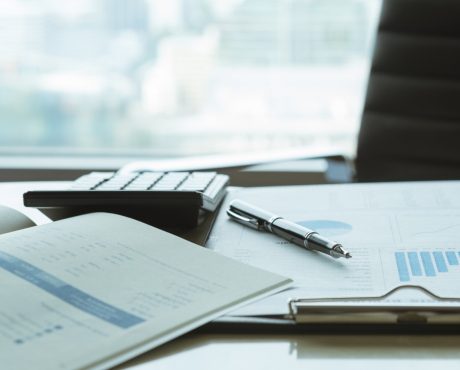There’s no other way to put it: October 2018 was a terrible month for U.S. stocks. The Dow Jones Industrial Average dropped 5.8%, the S&P 500 declined 7.3%, and the Nasdaq Composite plunged a whopping 9.1%.
That’s why today, I want to show you three tips that can help income investors survive a stock market crash.
1. Stop Checking Your Portfolio
In a market crash, many stocks will be in the red. And that makes people panic.
It doesn’t help the case that technology makes us constantly aware of what’s going on with our positions. You don’t even need to go near your computer; just a glimpse at your “iPhone’s” built-in “Stocks” app would make you want to call your broker right away.
Constantly checking their portfolio is exactly what income investors shouldn’t be doing. For one, it makes investors get emotional. And just like the game of poker, being on tilt often results in a player making less-than-optimal decisions.
As my colleague Robert Baillieul cleverly put it on one of the most volatile days of the market back in 2016, “The more distance you can put between you and your brokerage account today the better.”
And that’s the first thing income investors should keep in mind when the next sell-off arrives.
2. Get Defensive
For this one, you don’t need to wait till the next market crash. In fact, I would recommend doing it right now.
According to Investopedia, a defensive stock is one that “provides a constant dividend and stable earnings regardless of the state of the overall stock market.” (Source: “Defensive Stock,” Investopedia, last accessed November 1, 2018.)
Where would you find defensive stocks?
Well, based on the definition, it’s no surprise that defensive stocks tend to come from recession-proof industries like utilities, healthcare, and consumer staples. Because companies in these industries face consistent demand at different stages of the economic cycle, they can generate a stable business through thick and thin.
Note that the dividends provided by defensive stocks can give investors a good reason to hold on to their shares. And by holding on to shares of these solid dividend-paying stocks during a market downturn, investors get to see their investments go back up in value when the market starts to recover.
The importance of owning defensive stocks can be seen numerous times throughout history. It’s not that these stocks won’t go down—they likely will when market participants are selling everything—it’s that they can provide reliable dividends to help shareholders weather the storm in much better shape than most others.
Take the last financial crisis, for instance. To many, the Great Recession in the late 2000s was the biggest downturn since the Great Depression. Almost every single stock was dropping to the floor. But solid defense stocks like Johnson & Johnson (NYSE:JNJ) had no problem staying profitable or paying dividends. Investors who held on to JNJ stock ended up reaping huge rewards as the economy—along with the stock market—finally recovered.
Johnson & Johnson Stock Chart
Chart courtesy of StockCharts.com
3. Swap High Yield for Certainty in Dividend Growth
This is where long-term thinking comes into play. As a columnist here on Income Investors, I have written more than one thousand analytical pieces, mostly on high-yield stocks. While helping investors boost portfolio returns gives me great satisfaction, it is worth noting that ultra-high yielders are not always the safest bets.
And by that, I mean they may not offer enough margin of safety in their dividend policies. If the economy enters a downturn—a possible scenario during a stock market crash—many businesses (aside from the defensive ones I talked about earlier) will make less money. For an ultra-high yielder that was already paying out all its profits, a drop in the bottom line could lead to a dividend cut.
In a market where stocks are already falling, having a portfolio company cutting their dividend—which will likely cause the stock to drop even further—is like rubbing salt in the wound.
That’s why despite my fondness for double-digit yielders, it’s worthwhile to swap high yield for certainty in dividend growth in today’s environment. When I say certainty in growth, I’m talking about companies that can keep growing their payout to shareholders through the downturn.
The reason is simple: a stock may only yield three percent today, but if the company can raise its dividends at 10% per year, its payout would double in less than eight years. As a result, investors purchasing the stock today would earn a much higher yield on cost in the long run.
Where would you find stocks that provide certainty in dividend growth?
Well, the list of “dividend aristocrats” would be a good place to start looking. After all, if a company has been raising its dividend for decades and that streak suddenly stops, management will likely have some serious explaining to do.
